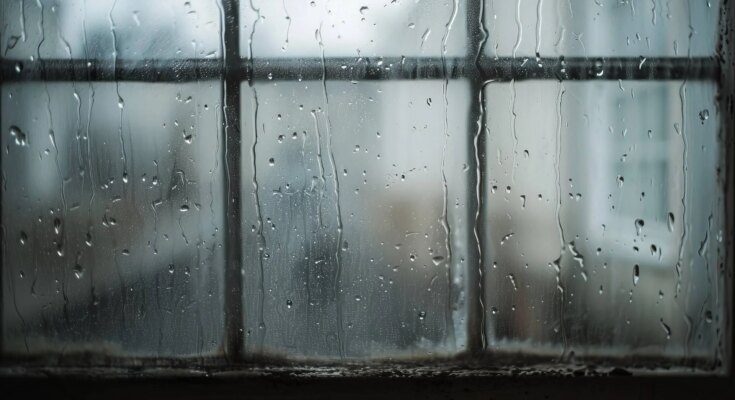A veil of droplets covered the glass and the view became completely blurry. The cause is condensation, a phenomenon that often occurs in damp autumn or winter and is not only annoying. In fact, condensation tells a lot about the climate in your home.
What Actually Is Condensation
Whether condensation forms inside or outside the window depends on several factors, but ultimately it does caused by differences in air temperature and humidity.
The air we breathe always contains some amount of water vapor and the amount may depend on the weather conditions outside. Cold air contains less moisture than warm air. Therefore, if the air temperature drops, that moisture can no longer be ‘suspended’ and turns into small droplets of water on the cooler surface.
The principle is the same as dew on the grass or wet car windows in the morning. The temperature at which air becomes saturated is called the “dew point”.
Condensation on the outside of the window is a good sign
If you see condensation on the outside of the glass, you can breathe a sigh of relief: this means that your window is well insulated.
Double glazing or highly thermally efficient windows prevent heat escapekeeps the outside of the glass cool. On damp, still nights, this can cause water to condense outside.
Basically, it’s proof that your equipment is working properly. And it will disappear by itself with the morning sunlight.
Condensation inside: when to worry
The situation is different if condensation forms inside the window. In this case
or the heat of the room meets glass that is too cold – a sign that the window frame is not properly insulated.
Cooking, showering or drying clothes indoors increases humidity and worsens the phenomenon.
Over time, water droplets can damage frames and encourage mold growth, especially in hidden places.
How to reduce condensation in your home
Here are some simple but effective tips:
– Air the room often, especially after showering or when cooking.
– Avoid drying clothes at home.
– Use a dehumidifier in more humid rooms.
– Do not cover all windows with curtains or shutters.
– Dry the windows with a cloth to avoid damage and water stains.
When condensation just ‘passes through’
However, what happens outside is completely natural and temporary. It only appears on some windows (often north-facing or in the shade) and disappears as the glass heats up.
You can reduce this by drying the glass after it rains or by applying a water-repellent coating that keeps water droplets at bay.



